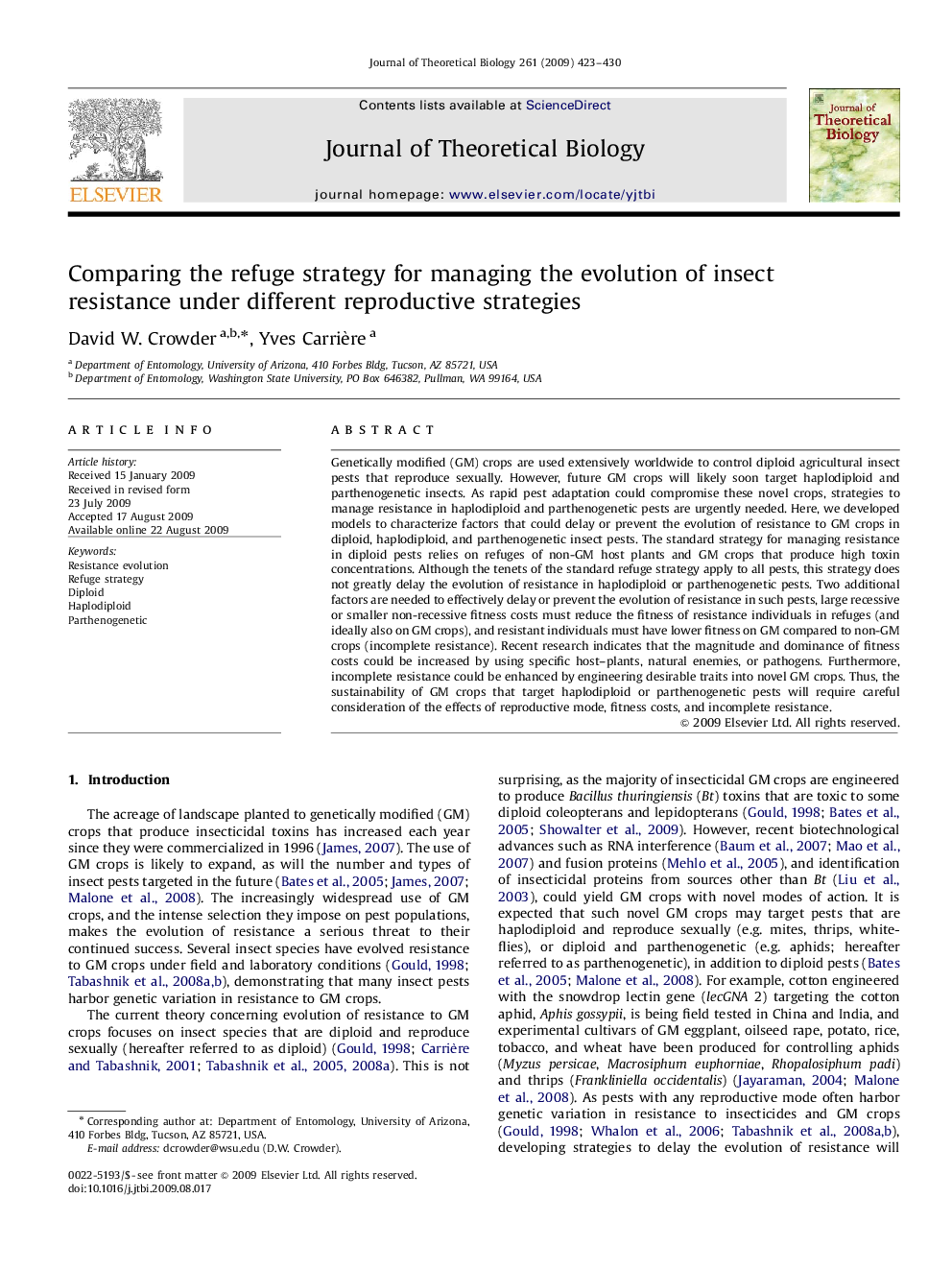| Article ID | Journal | Published Year | Pages | File Type |
|---|---|---|---|---|
| 4497681 | Journal of Theoretical Biology | 2009 | 8 Pages |
Genetically modified (GM) crops are used extensively worldwide to control diploid agricultural insect pests that reproduce sexually. However, future GM crops will likely soon target haplodiploid and parthenogenetic insects. As rapid pest adaptation could compromise these novel crops, strategies to manage resistance in haplodiploid and parthenogenetic pests are urgently needed. Here, we developed models to characterize factors that could delay or prevent the evolution of resistance to GM crops in diploid, haplodiploid, and parthenogenetic insect pests. The standard strategy for managing resistance in diploid pests relies on refuges of non-GM host plants and GM crops that produce high toxin concentrations. Although the tenets of the standard refuge strategy apply to all pests, this strategy does not greatly delay the evolution of resistance in haplodiploid or parthenogenetic pests. Two additional factors are needed to effectively delay or prevent the evolution of resistance in such pests, large recessive or smaller non-recessive fitness costs must reduce the fitness of resistance individuals in refuges (and ideally also on GM crops), and resistant individuals must have lower fitness on GM compared to non-GM crops (incomplete resistance). Recent research indicates that the magnitude and dominance of fitness costs could be increased by using specific host–plants, natural enemies, or pathogens. Furthermore, incomplete resistance could be enhanced by engineering desirable traits into novel GM crops. Thus, the sustainability of GM crops that target haplodiploid or parthenogenetic pests will require careful consideration of the effects of reproductive mode, fitness costs, and incomplete resistance.
